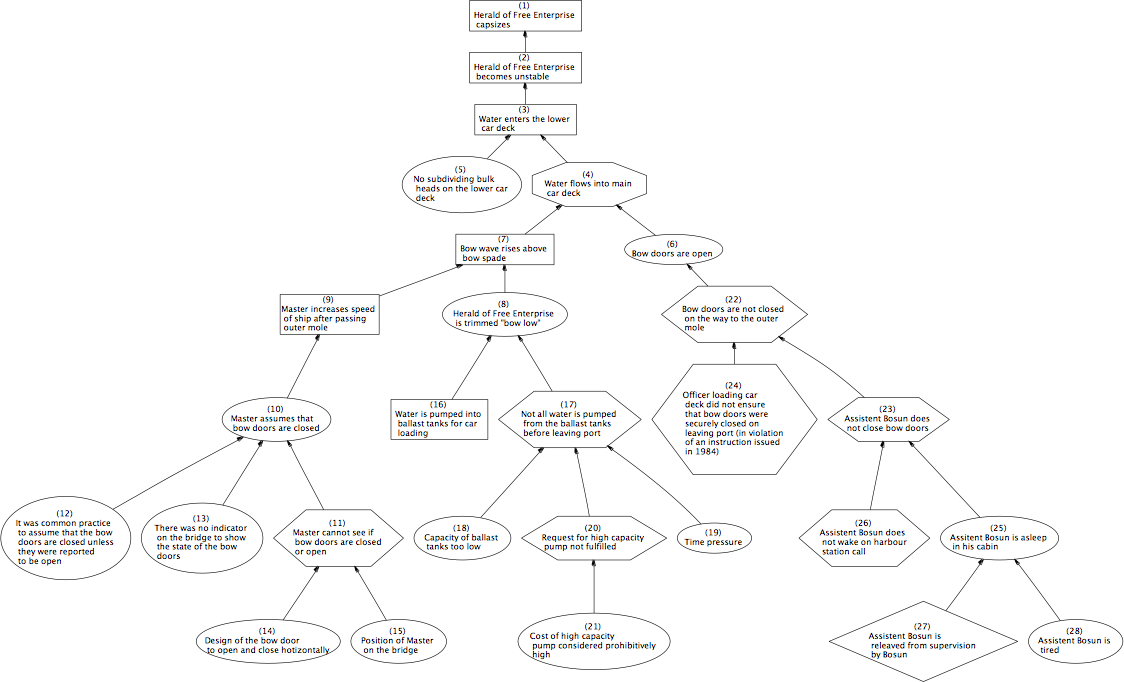Causation
First published Friday, 23 Oct 2015 22:08I recently presented with my pal Chris Hood (ex CBRE, now with Advanced Workplace Associates) at the IFMA World Workplace conference in Denver. As part of the Workplace Evolutionaries (WE) track we talked about how the workplace is changing, with new approaches to adjacency (how to arrange a floorplan so that people and teams can sit next to each other - is that even possible with globalization, virtual teaming and mobile work styles?) that take culture, virtual teaming, modern communication tools into account and always the need to reduce the sq ft/person to reduce costs. How to optimize the facilities budget while making sure that the workplace is flexible, attractive, etc. If you are into campus or workplace design, worth your time to review the > presentation as PDF.
One of my contributions to the talk was about the impact of change when technology, facilities, culture and process are all being optimized by the silo service organizations of IT, FM, HR. We got to talking about which changes contribute to which outcomes. Those who know me will now expect another evangelic diatribe about BDNs … but no. A light-bulb moment for me was to modify (OK, simplify) my language and story for the audience at hand. So I talked about cause and effect. People got that immediately.

NB: Of course, there can be multiple causes and multiple effects. Cause and Effect diagrams are usually drawn as a hierarchy or a fish-bone but I fear things are often more complex than first appeasrs. Which cause is having the biggest impact?
Now that I have time on my hands, I read and edit a lot of the Internet. On Wikipedia, that wonderful free encyclopedia there is a page on Causality that I have been contributing to. Also referred to as 'causation', or 'cause and effect', causality is the relation between an event (the cause) and a second event (the effect), where the first event is understood to be responsible (wholly or partly) for the second. The page wanders into Aristotle and Hindu philosophy but they express the concept better than I ever could; “everything arises in dependence upon multiple causes and conditions; nothing exists as a singular, independent entity.”
So, … I commented in a debate on Linkedin about the relevance of a “balanced” scorecard. Is a Balanced Scorecard still the best approach to setting/tracking goals and strategic management? I suggested that the world is now more complex with so many interdependencies that a simple ‘balanced’ approach cannot address. Kaplan added strategic non-financial performance measures to traditional financial metrics to give managers and executives a more 'balanced' view of organizational performance. Yes to scorecards and metrics but how do you compare, contrast or prioritize across multiple conflicting objectives, some financial, some non-financial, all impacted variously by multiple changes that all interact (as with organizational change across people, technology, culture, workplace, etc.)
Is ‘balanced’ the best we can do?

The connection between cause(s) and effect(s) is a causal nexus. Free-form "strategy maps" or Causal Loops are a great whiteboard approach to explore cause and effect. But perhaps more structured approach is needed as the Why-Because example shwon doesn't really provide us the insight needed. Why did the boat sink?
As we have said, outcomes have multiple causes. In this sad example, was it the increase in speed (9) that caused the bow wave to rise above the open car deck (7) or the trim level (8) of the ship? In a complex world, Why and Because are not enough, just as a balancing a scorecard with a nod to HR and Customer Service doesn’t really help us. Which leads us back to causation; showing the contribution of each cause on each effect. Which of course is a BDN! Explore more at http://www.davidslight.com/bdn/
Of course, the last word must also go to some wag on Wikipedia: Not to be confused with Casualty!


